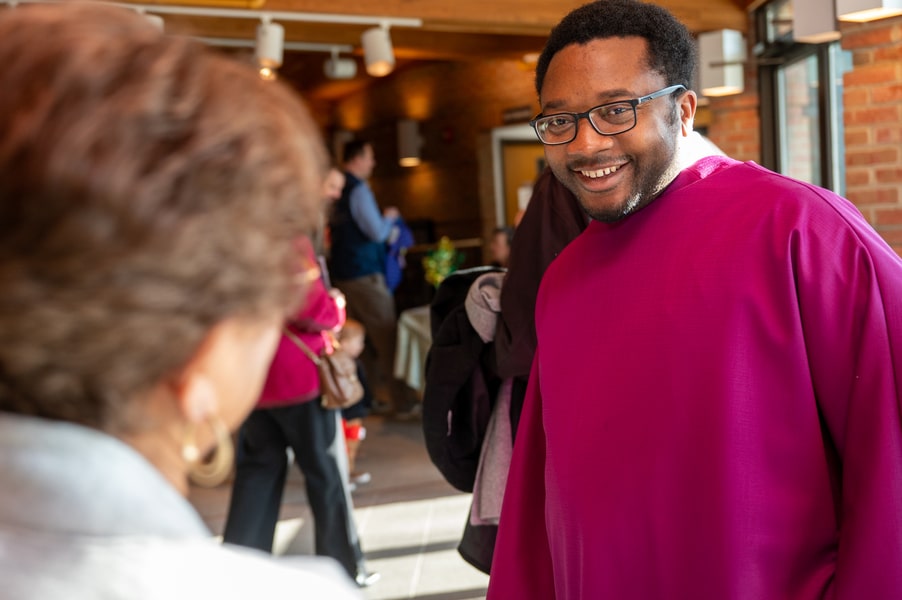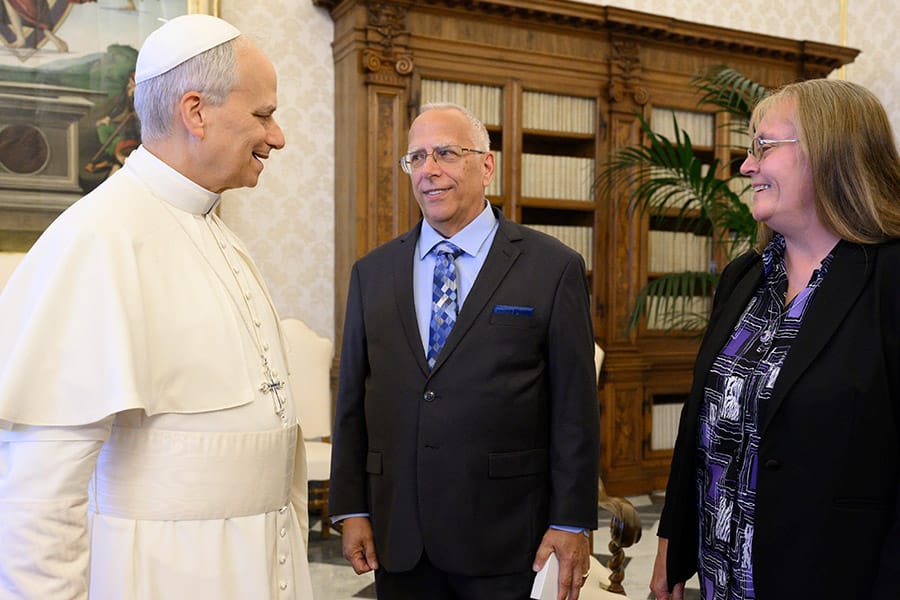
WASHINGTON (CNS) — Based on responses to a questionnaire sent to all U.S. dioceses, the Center for Applied Research in the Apostolate estimates there are about 19,000 deacons in the United States today.
The number, though, is dropping, mirroring trends seen in religious life and the priesthood for the past half-century.
“Responding offices reported that 410 deacons retired from active ministry and 378 died. Another 587 were ordained to the permanent diaconate during 2020,” said the report, “A Portrait of the Permanent Diaconate: A Study for the U.S. Conference of Catholic Bishops,” issued June 1. The trend goes back to at least 2014.
Deacons are getting older, too. The CARA report said 35% are 70 or older, 40% are ages 60-69, 21% are ages 50-59, just 5% are ages 40-49, and only 1% are under 40.
“Latin rite arch/dioceses reported having 12,292 permanent deacons active in ministry. The single eparchy (participating in the questionnaire) reported 11 active permanent deacons. Extrapolating to include dioceses and eparchies that did not respond to the survey, it can be estimated that there are 14,722 deacons active in ministry in the United States today, or about 78% of all permanent deacons,” the report said, adding the estimated number of all deacons is 19,008.
CARA also figures that, if 78% of deacons are in active ministry, then 17% are retired, 2% are on a leave of absence, 2% have been suspended from active ministry, and 2% inactive for other reasons.
Retirement age differs from diocese to diocese. Forty-two percent of dioceses have no retirement age for deacons. Of the others, no diocese requires deacons to retire until they reach at least age 70, while 88% require retirement at ages 75-79, and 10% mandate retirement at ages 70-74. One percent does not require retirement until at least age 80.
The archdiocese with the most deacons is the Archdiocese of Chicago, with 852, exactly twice that of the Archdiocese of Los Angeles’ 426.

Other dioceses and archdioceses with at least 250 deacons are, in descending order, the Archdiocese of Galveston-Houston, 367; the Archdiocese of San Antonio, 364; the Archdiocese of New York, 305; the Archdiocese of Atlanta, 299; the Archdiocese of St. Louis, 297; the Diocese of Rockville Centre, New York, 268; the Archdiocese of Philadelphia, 265; and the Archdiocese of Boston, 255.
But other dioceses have a much smaller ratio of Catholics to deacons. The Diocese of Lexington, Kentucky leads the way with a ratio of 508 Catholics per deacon.
Other dioceses with ratios under 900 Catholics per deacon, in ascending order, are the Diocese of Rapid City, South Dakota, 640; the Diocese of Jefferson City, Missouri, 703; the Diocese of Bismarck, North Dakota, 725; the Diocese of Amarillo, Texas, 747; the Diocese of Duluth, Minnesota, 779; the Archdiocese of Anchorage, Alaska, 783; the Diocese of Savannah, Georgia, 871; and the Diocese of Pensacola-Tallahassee, Florida, 893.
According to CARA, 93% of deacons are married, 4% are widowed, 2% have never married, 1% are divorced and have not remarried, and fewer than 1% remarried subsequent to diaconal ordination.
CARA said the racial and ethnic makeup of U.S. deacons is 72% white, 21% Hispanic, 4% Asian/Pacific Islander, 3% Black, and fewer than 1% Native American or other.
The report said 93% of deacons are incardinated in the diocese in which they serve, and 6% are incardinated in another Latin-rite diocese but serving with faculties in their diocese of residence. Fewer than 1% are incardinated in Eastern Catholic churches or as members of religious orders.
“One in nine active permanent deacons are financially compensated for ministry in 2020, a continuation of a downward trend from 27% in 2001, 26% in 2017, and 15% in 2019,” the report said.
Also, “87% of responding arch/dioceses and arch/eparchies require post-ordination formation for deacons,” CARA said. “Among those that do require post-ordination formation, the median number of hours required per year is 20.”
How dioceses deal with diaconal ministry also were questionnaire topics.
Eighty percent of responding dioceses say they have a plan for placement and ministry of deacons, and 93% have an active formation program for the diaconate. Of those that don’t, 78% said they were planning to establish one within the next two years.
Close to two-thirds of dioceses have an active deacon council or deacon assembly, and responding dioceses were about evenly split as to whether they had a formal policy for deacons who got divorced or separated after their ordination.
“As our world continues to grapple with the effects of the COVID-19 pandemic, permanent deacons provide an encouraging witness to the love and mercy of Christ,” said Bishop James F. Checchio of Metuchen, New Jersey, chairman of the U.S. bishops’ Committee on Clergy, Consecrated Life and Vocations.
In a statement accompanying the release of the CARA report, he emphasized the importance of permanent deacons to the church, saying: “They bring the light and presence of Jesus into many different areas of society — preaching the Gospel in their jobs, within their families, to the poor and among their broader communities.”
Also see
Copyright © 2021 Catholic News Service/U.S. Conference of Catholic Bishops








